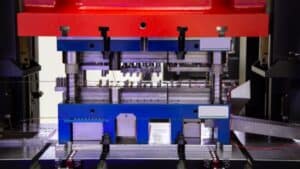3D printing technology will lead the development of mass manufacturing mode to personalized manufacturing mode.
Its outstanding advantages are to save manufacturing costs, improve production efficiency, and realize integrated manufacturing of complex structures.
Its core concept is to add additive manufacturing layer by layer.
Because the parts are integrally formed in 3D printing, there is no need for materials embedded in the parts to play a supporting role during product construction because this is the opposite of most traditional manufacturing processes.
The way 3D printing technology allows parts to be positioned on the construction platform at any imaginable angle.
This method determines that 3D printing technology does not need to consider the limitations of processing methods of various materials, but only needs to pay attention to the relationship between objects in space.
The centralized forming and manufacturing method can greatly improve the use efficiency of equipment materials, help reduce energy consumption and material waste and make the production process more environmentally friendly.
At present, the development bottleneck of 3D printing technology is mainly reflected in two aspects.
1) The cost of 3D printing technology is too high and lacks a large number of application environments.
So far, the technical level of 3D printing technology has not yet matured.
The printing process must rely on the establishment of an accurate coordinate system in the early stage before printing can be carried out.
The whole process requires the cooperation of many fields such as software, equipment, and materials.
The development of the latter two links is still in the exploratory stage.
At present, the price of high-precision 3D printers is still high, and most of the software for constructing 3D models requires complicated operation skills, and it takes a certain amount of time to understand and learn, which makes the rapid popularization of civilian use.
2) Limitations of print quality and materials.
At present, the printing accuracy of different 3D printers is quite different.
Commercial desktop-level 3D printers generally have the defect of insufficient accuracy, and the size requirements and surface quality of the printed products cannot meet the higher demand for use.
In terms of the selection of raw materials, so far, the types of materials that can be used for 3D printing are very limited, and cannot be compared with the abundance of traditional manufacturing materials.
Moreover, due to the immature molding process, the structural strength of the product after molding is generally up to Less than the use standard, post-processing methods such as heat treatment are still needed to increase the strength, which greatly limits the scope of 3D printing technology that can be used.
3D printing technology is currently unable to achieve simultaneous printing of cross-category materials.
Therefore, the most common use is still limited to products with relatively single functions and structures.
However, with the further development and growth of computer technology and new manufacturing industries in the future, 3D printing technology will develop better and faster.






